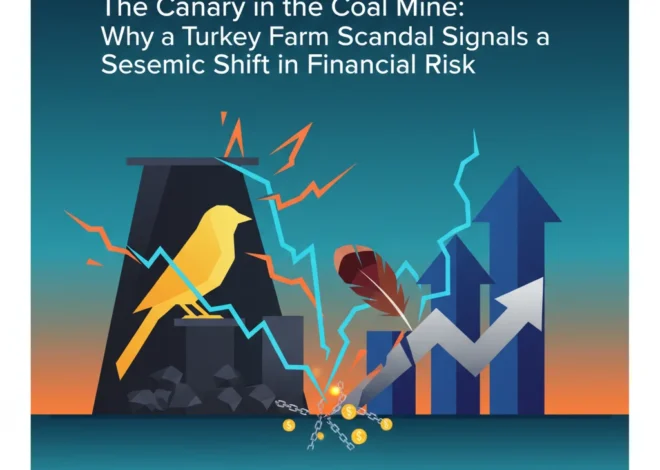
The Billion-Pound Green Shadow: When Well-Intentioned Economics Meets Costly Reality
In the global push towards a sustainable future, multi-billion-pound government initiatives are often heralded as the engine of progress. These programs, designed to stimulate the green economy and reduce carbon footprints, attract significant attention from investors, policymakers, and the financial sector. However, a recent and alarming situation in the United Kingdom serves as a stark reminder that even the most well-intentioned financial injections can lead to disastrous outcomes if not managed with rigorous oversight. A story of botched eco-insulation, affecting tens of thousands of homes, has unfurled into a cautionary tale of misallocated capital, operational failure, and the hidden risks lurking within the burgeoning green investment landscape.
At the heart of the issue are government-backed insulation programmes, which, despite costing taxpayers billions, have resulted in widespread problems of damp and mould in homes they were meant to improve. According to an investigation by the BBC, these schemes have left a legacy of structural damage and potential health hazards for countless families. This isn’t merely a construction issue; it’s a profound failure of public finance, a case study in poor governance, and a critical lesson for anyone involved in the economics of the green transition—from private investors to leaders in banking and financial technology.
The Anatomy of a Multi-Billion-Pound Misstep
Understanding how such a promising initiative went so wrong requires a closer look at the mechanics of the failure. The goal was simple and admirable: upgrade the energy efficiency of the UK’s housing stock, lower energy bills for consumers, and reduce national carbon emissions. The government provided substantial subsidies, creating a surge in demand for insulation services. However, this rapid injection of capital into the market created a classic economic distortion.
The sudden boom led to a “gold rush” environment where the number of qualified, experienced installers was insufficient to meet the demand. Consequently, the market was flooded with undertrained or unscrupulous contractors. The focus shifted from quality installation to the rapid fulfillment of subsidized contracts. Key failures included:
- Improper Ventilation: Many homes, particularly older ones with solid walls, were sealed without adequate ventilation, trapping moisture inside.
- Poor Workmanship: Cavity walls were incorrectly filled, leaving gaps that led to cold spots and condensation.
- Lack of Vetting and Oversight: The frameworks designed to ensure quality control were clearly inadequate, allowing substandard work to be approved and paid for.
The financial fallout is staggering. Not only has the initial investment been wasted, but the cost of remediation will likely run into the hundreds of millions, if not billions. For homeowners, the result is a nightmare of devalued property, costly repairs, and potential health issues. For the taxpayer, it represents a monumental waste of public funds. This situation highlights a critical blind spot in many large-scale investment programmes: the assumption that capital alone can solve a problem without a robust infrastructure for execution and governance.
To put the financial scale and impact into perspective, consider the breakdown of the investment versus the outcome:
| Investment Component | Intended Outcome | Actual Outcome & Financial Implication |
|---|---|---|
| Government Subsidies (Billions of Pounds) | Stimulate green economy, reduce emissions, lower energy bills. | Market distortion, wasted capital, creation of a new, unfunded liability (remediation costs). |
| Homeowner Investment | Increased property value, long-term energy savings. | Decreased property value, significant repair costs, health hazards from damp and mould. |
| Private Sector Investment (Contractors) | Business growth, job creation in the green sector. | Reputational damage to the industry, potential for litigation, financial instability for firms involved in recalls. |
A Sobering Lesson for the ESG Investing Community
For the finance and investing world, this episode is more than a distant news story; it’s a critical case study in the risks of Environmental, Social, and Governance (ESG) investing. The eco-insulation schemes would have, on paper, ticked all the right boxes for an ESG-focused fund. They were environmental (reducing emissions), social (helping low-income households), and backed by government (implying good governance). Yet, the reality was a catastrophic failure on all three fronts.
The environmental goals were undermined by poor execution. The social benefits were inverted, causing harm to the very people the schemes were meant to help. And the governance was demonstrably absent. This exposes a fundamental vulnerability in the ESG investing thesis: reliance on high-level metrics and government backing without scrutinizing the on-the-ground reality. Investors who may have allocated capital to construction companies, material suppliers, or funds participating in these schemes are now exposed to significant reputational and financial risk. The performance of related companies on the stock market could suffer as the full scale of the liability becomes clear.
This incident forces a necessary evolution in investment analysis. Due diligence must go beyond policy statements and financial projections. It must include a thorough assessment of:
- Operational Capacity: Does the sector have the skilled labor and infrastructure to absorb a massive capital injection?
- Supply Chain Integrity: Are the materials and contractors vetted and certified to a high standard?
- Accountability Mechanisms: What are the recourse and remediation plans if something goes wrong?
Without these checks, ESG investing risks becoming a new form of “greenwashing,” where good intentions pave the road to financial and social ruin.
Can Financial Technology Prevent the Next Green Debacle?
While the problem is rooted in traditional project management failures, the solution may lie in modern financial technology. The lack of transparency, traceability, and accountability is precisely what emerging technologies like blockchain and advanced fintech platforms are designed to solve. Imagine a future where such a government programme is managed not through fragmented databases and paperwork, but on a unified, transparent digital ledger.
Here’s how a fintech-driven approach could have rewritten this story:
- Installer Verification on a Blockchain: Each certified installer could have a digital identity on a blockchain, with their qualifications, training history, and past project reviews recorded immutably. Homeowners and regulators could instantly verify an installer’s credentials.
- Smart Contract-Based Payments: Instead of releasing funds based on simple completion forms, payments could be governed by smart contracts. Funds would be released automatically in tranches, triggered only by the successful completion of verifiable milestones—such as a digital confirmation of a passed third-party inspection, complete with photographic evidence uploaded to the ledger.
- Supply Chain Transparency: The provenance of insulation materials could be tracked from factory to installation, ensuring that specified, quality-approved products are being used. This combats fraud and the use of substandard materials.
This comparison shows a clear path forward for public and private finance.
| Process Element | Traditional Flawed System | Potential Fintech/Blockchain Solution |
|---|---|---|
| Installer Vetting | Paper-based certificates; difficult to verify; prone to fraud. | Immutable digital identity; transparent record of qualifications and project history. |
| Quality Assurance | Manual, sporadic inspections; subjective reporting; easily falsified. | Mandatory, digitally-logged inspections; photographic/sensor data linked to project. |
| Payment & Finance | Lump-sum payments on completion; high risk of paying for substandard work. | Smart contracts releasing funds upon verified completion of milestones. |
| Accountability | Difficult to trace blame; lengthy and costly legal disputes. | Clear, time-stamped record of all actions, from material supply to final sign-off. |
Implementing such financial technology would add a layer of robust, automated governance that is currently missing. For the banking sector financing these large-scale projects, and for trading desks pricing the risk of related securities, this level of transparency would be transformative. It turns a high-risk, opaque investment into a more predictable and auditable one.
The Path Forward: Integrating Prudence with Ambition
The UK’s insulation crisis is a microcosm of a larger challenge facing the global economy. The transition to a sustainable future requires trillions of dollars in investment, but capital without competence is a recipe for disaster. This story is not an argument against green investment; it is a powerful argument for smarter, more accountable green investment.
For business leaders, the takeaway is the critical importance of operational excellence. For finance professionals and investors, it is a reminder that due diligence must be exhaustive and that governance is the bedrock of any successful long-term investment, especially in highly subsidized or rapidly growing sectors. The stock market will ultimately reward companies that can demonstrate not just environmental vision, but also the ability to execute flawlessly.
As we move forward, the integration of financial technology into public and private project finance is not just an option; it is a necessity. By leveraging technology to build systems of trust and transparency, we can ensure that the next wave of green investment builds a legacy of sustainable prosperity, not a costly and dangerous shadow of damp and mould.


